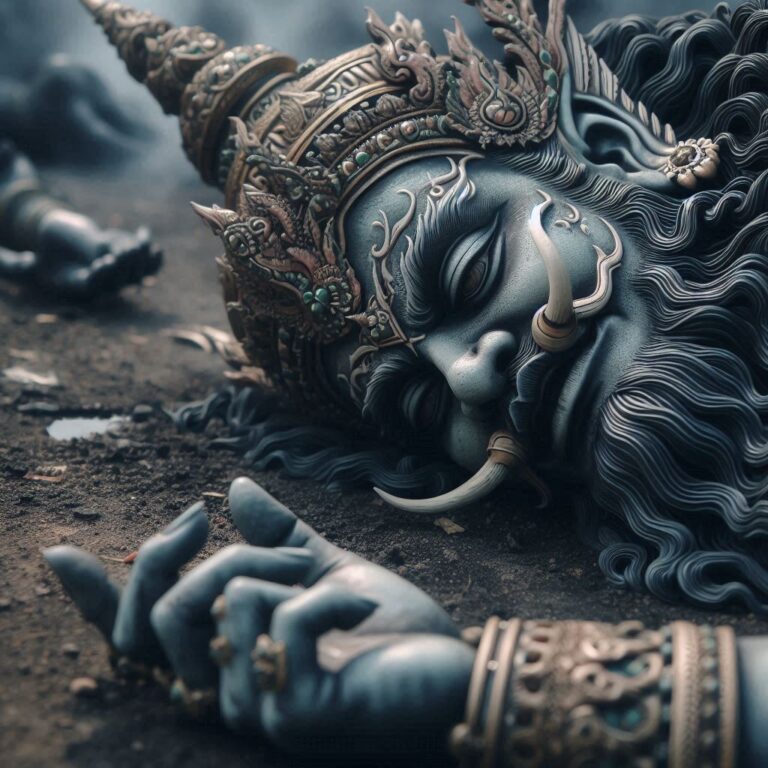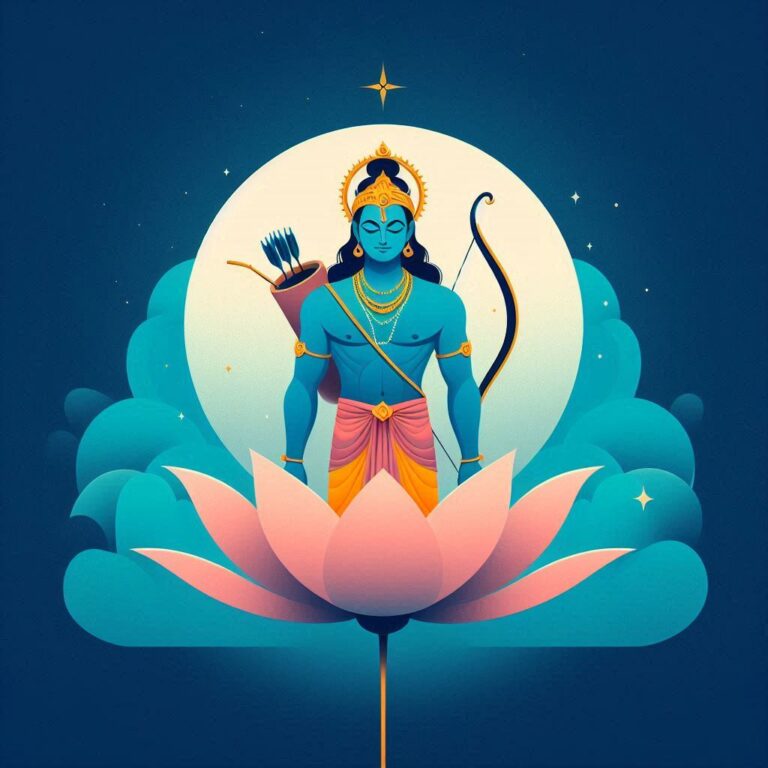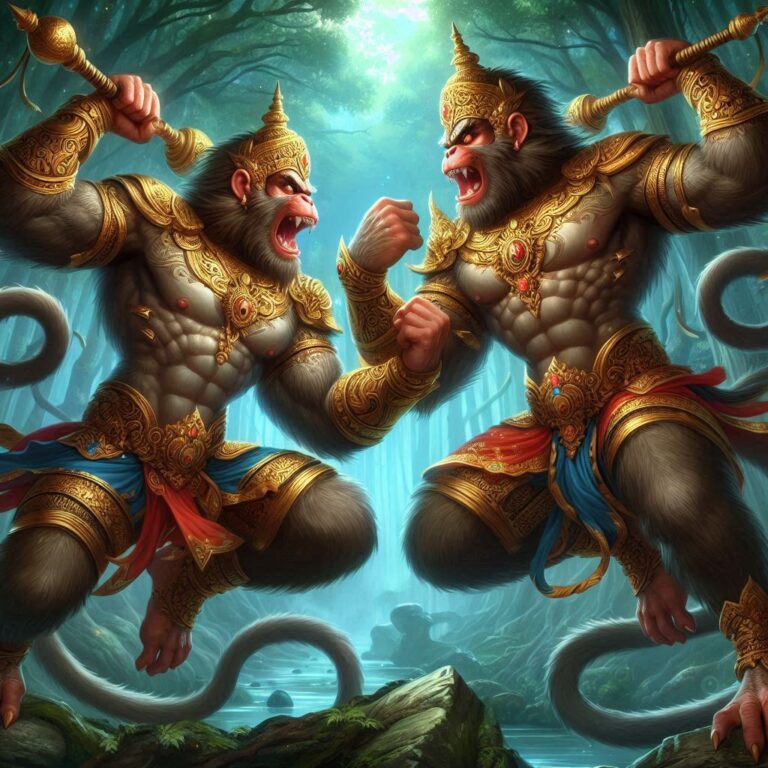Shatrughna’s Vital Role and Impact in the Ramayana
The Unsung Hero: Shatrughna’s Role in the Ramayana
When you think of the epic Ramayana, the first figures that often come to mind are Lord Rama, Sita, and Hanuman. But what about the less celebrated characters who played crucial roles in this grand saga? One such character is Shatrughna, the oft-overlooked brother of Lord Rama. So, let’s dive deep into Shatrughna’s contributions, significance, and his overall impact in the Ramayana.
Who is Shatrughna?
Shatrughna was the youngest brother of Lord Rama—born to King Dasharatha and Queen Kaushalya. While he may not have received the same level of attention or reverence as some of the primary figures in the epic, Shatrughna had his own unique role to play. Despite being in the shadows, there’s so much you can learn from him and his actions.
Shatrughna’s Reverence and Relationship with Rama
Imagine a sibling bond so strong that it’s not just about familial ties but also about unwavering loyalty and duty. Shatrughna’s relationship with Rama embodies this spirit perfectly. He was not merely another brother; he was a constant source of support and a loyal companion. Their camaraderie illustrated the importance of brotherhood in ancient Indian culture.
Have you ever thought about how many times family dynamics play vital roles in shaping one’s character? Shatrughna not only exemplified brotherly love but also the idea that every individual, no matter how small their role, can make a significant impact.
Shatrughna’s Contributions in the Ramayana
1. The Defense of Ayodhya
One aspect that is often overshadowed is Shatrughna’s fierce determination to protect Ayodhya. It was Shatrughna who took on the formidable demon Lavanasura, who threatened the safety of their kingdom. With swift decisiveness, Shatrughna eliminated Lavanasura, securing peace for the realm.
But think about it—what does this action represent? It’s not just about defeating an enemy; it’s a testament to Shatrughna’s role as a protector and how essential the support of ‘silent warriors’ can be in maintaining the peace.
2. The Importance of Unity
Shatrughna and his brothers exemplify unity and the power of collaboration. Whether it was supporting Rama during his exile or joining forces with Lakshmana and Bharata, Shatrughna’s role highlighted the importance of standing together during challenging times.

By showing how collaboration leads to victory, Shatrughna subtly teaches us about the significance of teamwork in any endeavor—whether personal or professional.
3. The Role of a Humble Leader
Shatrughna exemplified humility and calmness in action. As much as he was a warrior, he also carried the virtues of compassion and humility. Even in pivotal moments, he did not seek recognition; instead, he worked quietly behind the scenes, ensuring that his brothers did their jobs efficiently.
Do you see how in modern organizations, those often recognized are not always the ones who do the work? Shatrughna teaches us that true leadership often shines brightest behind the scenes.
4. Promoting Dharma
Shatrughna’s dedication to dharma, or righteous duty, is another critical aspect of his character. He followed the principles of morality and righteousness taught by his elder brother Rama. This dedication to dharma accentuates the timeless struggle between right and wrong—a theme constantly echoed throughout the Ramayana.
Remember that showdown with Lavanasura? It wasn’t just about winning; it was about preserving the moral fabric of their society.
5. The Symbol of Devotion
Shatrughna’s loyalty to Rama and his commitment to his family set an exceptional standard of devotion. His love and respect for his brothers extended beyond mere words; he lived for them.
In this modern, fast-paced world, wouldn’t it be nice to remember that real relationships are built on dedication and care? Shatrughna’s life is a shining example of unwavering support.
Shatrughna’s Legacy
Just because Shatrughna isn’t the most discussed hero doesn’t mean his legacy is any less significant. His actions and character can still inspire countless generations.
We often look to big figures for guidance, but sometimes it’s the smaller, quieter ones who embody traits worth emulating. Shatrughna summarizes the essence of loyalty, duty, and humility, showing us that even in the backdrop, you can be a hero.
His Influence on Modern Culture
Talk about relevance! Concepts in the Ramayana, including those embodied by Shatrughna, find their way into contemporary discussions on leadership, sacrifice, and ethics. Have you considered how these ancient narratives still shape personal and societal values today?
For instance, the idea of brotherhood and loyalty seen in Shatrughna’s life can be likened to the modern-day notions of teamwork and support. Just like you might support a friend or colleague through a tough time, Shatrughna’s actions serve as a guiding light for us today.
Sholakas and Dohas Surrounding Shatrughna’s Ethos
To further grasp Shatrughna’s essence, let’s reflect on some powerful verses:
-
शात्रुघ्नस्य यशः पूज्यं, रामं च यो मन्यते।
हरिभक्तिं प्रदास्यति, तस्मिन् च सदा सदा।।(Shatrughna is revered, one who honors Rama, bestows devotion to Hari, always and forever.)
Shatrughna’s legacy is about reverence and devotion. It ties into our collective respect for relationships.
-
धर्म निष्ठा सदा भद्रं, पौरुषं त्वं महाद्युतिम्।
यत्र यत्र गतो रामः, तत्र तत्र तव प्रियम्।।(Your steadfastness in duty always brings goodness; wherever Rama goes, there you find his affection.)
Life is a journey marked by relationships and mutual respect.
-
**अवृत्त्याः साधां वदति, शात्रुघ्नः सदा हितान्।
न क्षेमं कर्तुमिच्छन्ति, विक्रान्ति हि विभुर्विभुः।।**
(Shatrughna speaks for the well-being, wanting no harm; only the Divine can ensure peace.)
Peace through righteousness, important for a meaningful life.
-
संकल्पे तितिक्षा धीरः, शात्रुघ्नो युष्मिन्मरीचिः।
वनान्तिके हतो रामः, यत्रेति च सदा शान्ति।।(With resolve and steadiness stands Shatrughna; in forests where Rama fell, peace follows.)
Courage and perseverance bring lasting serenity.
-
कर्तव्यं कर्तुं राघवम्, शात्रुघ्नः सदा मितः।
यत्र शत्रु संमर्देत, तत्र देवः सुराप्रियः।।(To act is the duty of Raghav, Shatrughna keeps measured; where foes are vanquished, the divine is dear.)
Significance lies in performing one’s duties without desire for recognition.
Conclusion
In summary, Shatrughna may not be the loudest voice in the Ramayana, but his actions reverberate across the ages. His commitment to duty, loyalty to his brothers, and unwavering humility form a narrative worth exploring. While the epics are rich in characters, it’s essential to remember that every story, even that of the quietest warrior, has lessons worth learning.
Many of us may find ourselves in the shadows at times, unsure of our impact. But as Shatrughna’s life shows us, it’s not always about being in the spotlight—it’s about the strength and character you carry, waiting in the wings to contribute when called upon.
FAQs
Q1: Why is Shatrughna often overlooked in the Ramayana?
A1: While his contributions are vital, many readers focus on more prominent figures like Rama and Sita. However, Shatrughna plays a crucial protective role behind the scenes.
Q2: What does Shatrughna symbolize in the epic?
A2: He symbolizes loyalty, humility, and the importance of familial bonds, illustrating that every individual can contribute to a greater cause.
Q3: How does Shatrughna’s character relate to modern-day virtues?
A3: His dedication to duty and teamwork aligns with contemporary values of responsibility and collaboration.
Q4: Can you share a famous story involving Shatrughna?
A4: One of the most notable tales is his battle against Lavanasura, highlighting his valor and commitment to protecting Ayodhya.
Q5: What can we learn from Shatrughna’s approach to duty?
A5: Shatrughna teaches us that performing our responsibilities with dedication, even in silence, is vital for the well-being of our communities.







